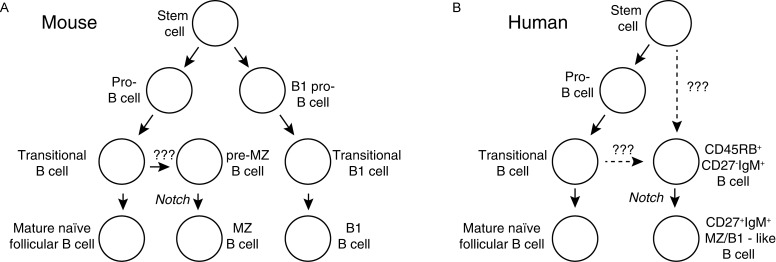Fig. 3. B cell lineages.
Different lineages of B cells in mice, and data in humans support that this is also true in humans. A: Three mature lineages of B cells have been defined in mice – follicular, marginal zone and B1 B cells. Follicular and marginal zone B cells share early maturation stages and are formed all through life. After MZ B cells receive a yet undefined cue they interact via Notch-mediated signals with cells in the spleen to become mature MZ B cells. B1 cells form, at least partly, from distinct stem cells in bone marrow and fetal spleen. Furthermore, B1 cells formed during early life form a self-renewing pool of cells in peritoneal cavities that does not depend on bone marrow production of cells for maintenance. B: The situation in humans is less clear, but several groups have described cell populations with similarities to MZ and/or B1 cells in lymphoid organs and blood. These express high levels of IgM, CD27 and the CD45RBMEM55glyco-epitope. It is not known if they form from specific stem cells or transitional cells, but a cell population with the ability to differentiate into this lineage through Notch-mediated signals similar to the situation in mouse spleen was recently defined in the human spleen[123].

